Many Americans are still apprehensive about traveling abroad — the new COVID BA.5 variant has vacationers staying closer to home. But, with our Canadian neighbors to the north, there’s no need to forgo an international getaway. The land of maple syrup provides the flavor and feel of a trip to Europe, close to home.
Last May I visited Toronto. Prior to arrival I was required to complete an ArriveCAN form online. The Canadian government uses this as a way to streamline entry into the country.
All tourists entering via air, car/bus or sea must fill out ArriveCAN information within 72 hours before arriving.
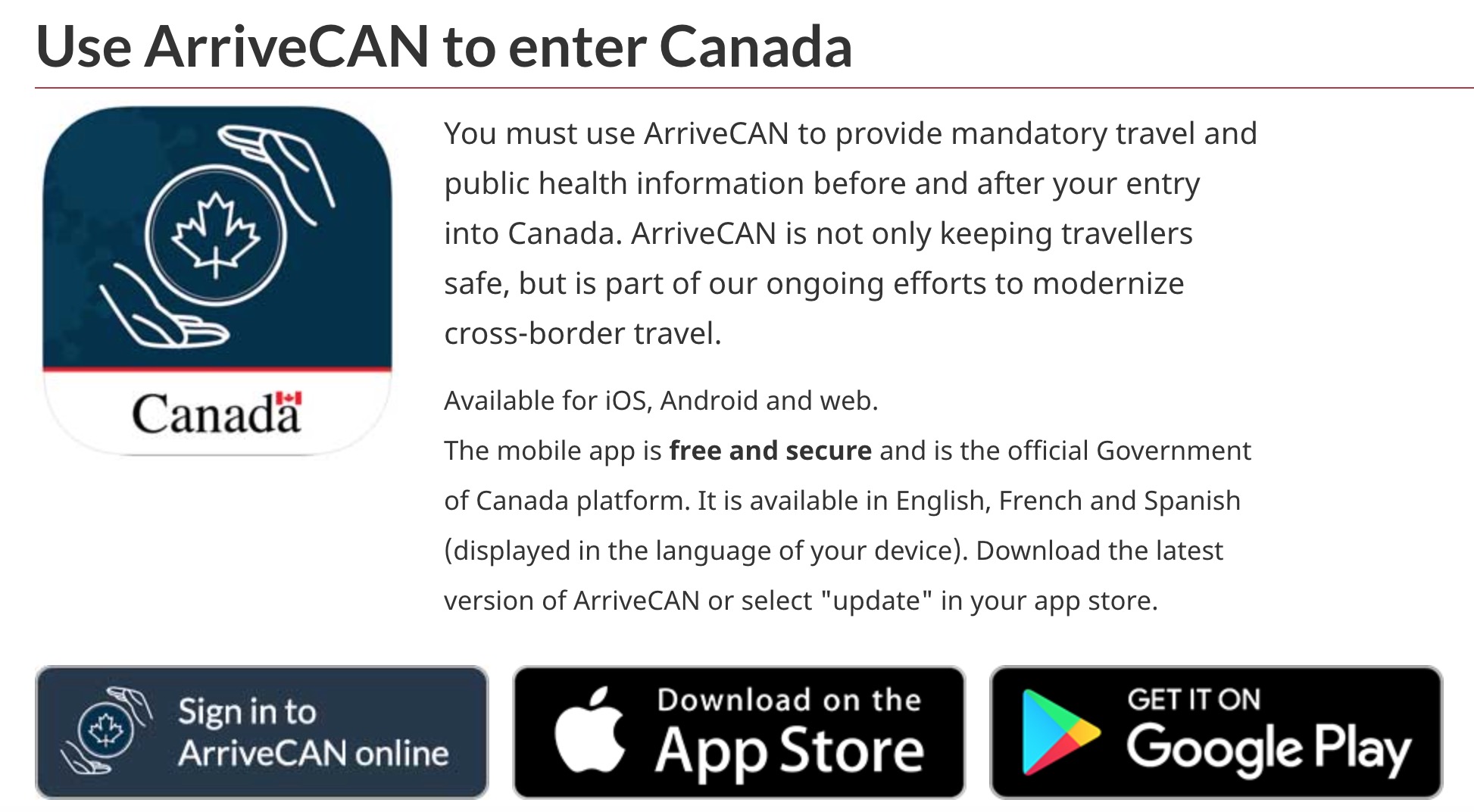
The website or app gathers your travel and health information. The app can be found in the App Store or Google Play.
Here is how to navigate the ArriveCAN app when traveling to Canada.
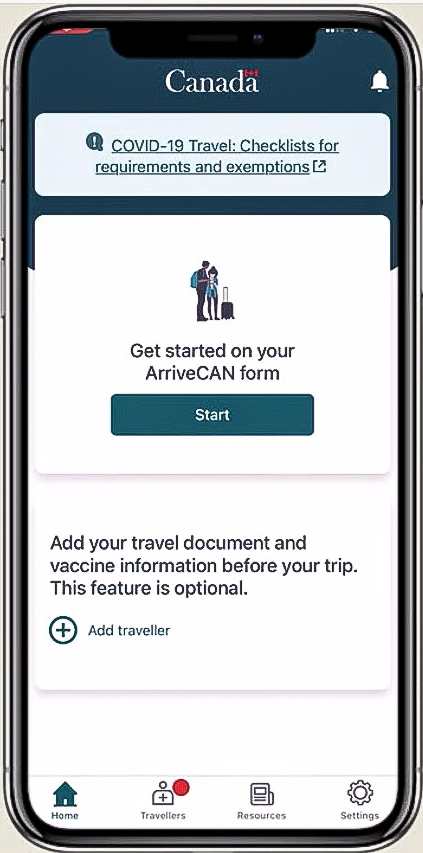
ArriveCAN for Incoming Travelers
It’s easiest to download the app onto a smartphone rather than accessing the website each time information is added.
When the app is downloaded on your phone, create an account with an email and password. Once signed on, proceed with the application.
Click “trip details.” You’ll be asked “what best describes you or your primary reason for entering Canada?” Check the “discretionary/optional” choice. This indicates a visit for leisure and tourism.
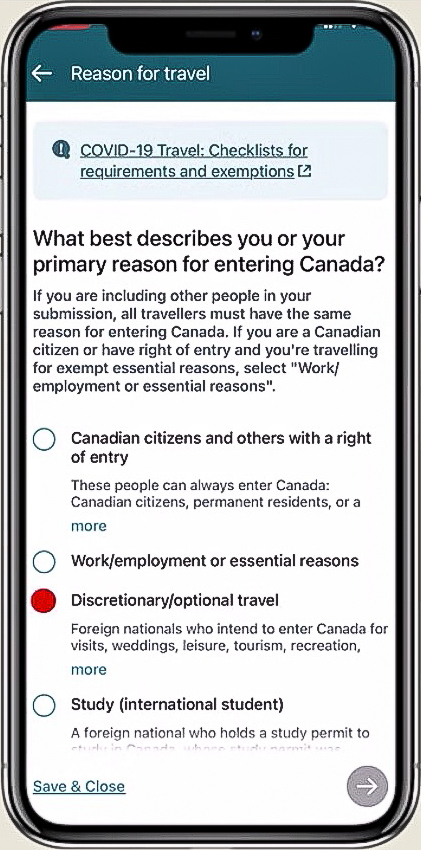
“How are you entering Canada?” is the next question. There are three choices — air, car/bus, or sea.
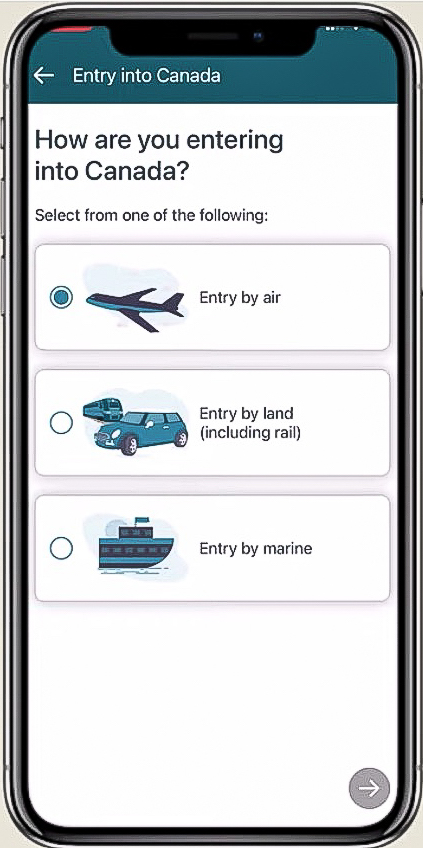
The following information appears depending on which mode of transportation is selected.
Air: COVID testing outlines and requirements: Fully vaccinated travelers may be randomly selected for testing upon arrival at a Canadian airport.
Non-Canadian citizens age 12 or older who want to enter Canada must be vaccinated with at least two vaccines or one J&J. Booster shots are not necessary.
Car/Bus: Travelers list the port of entry and date of arrival.
Sea: Visitors list country of departure, date of embarkation, port of entry into Canada, and date of arrival.
We’ve chosen air for this demonstration.
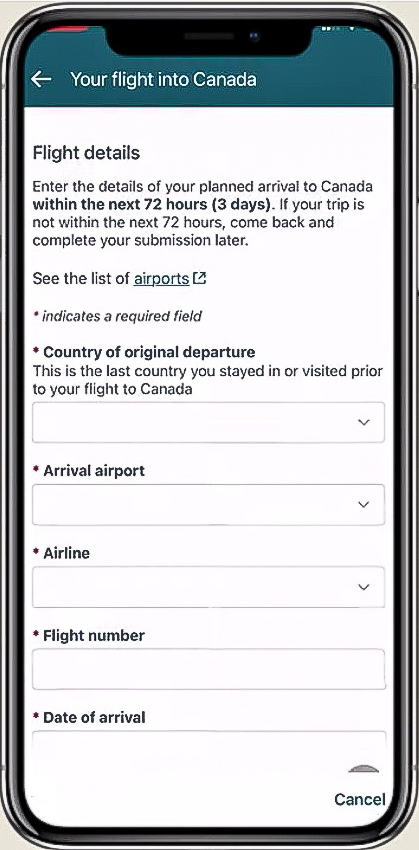
Enter arrival details. This includes the country of origin, arrival airport, airline, flight number and date of arrival.
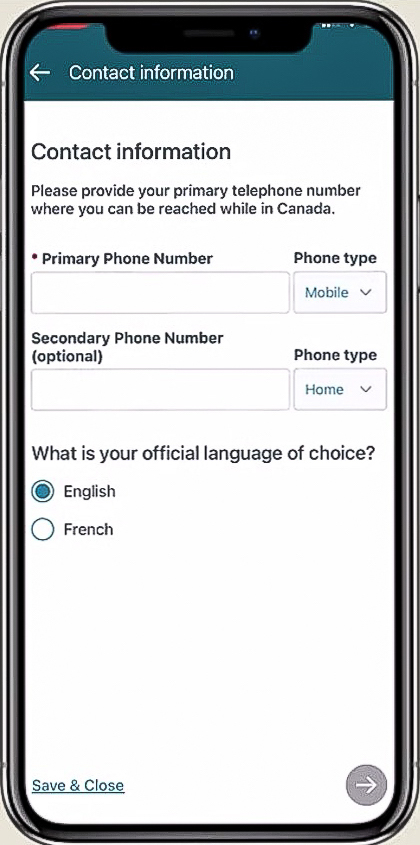
Once the entry is complete, your primary phone number and official language of choice is needed. This is due to Canada being a bilingual country. While most people speak English, French is still spoken quite a bit, especially in the province of Québec.
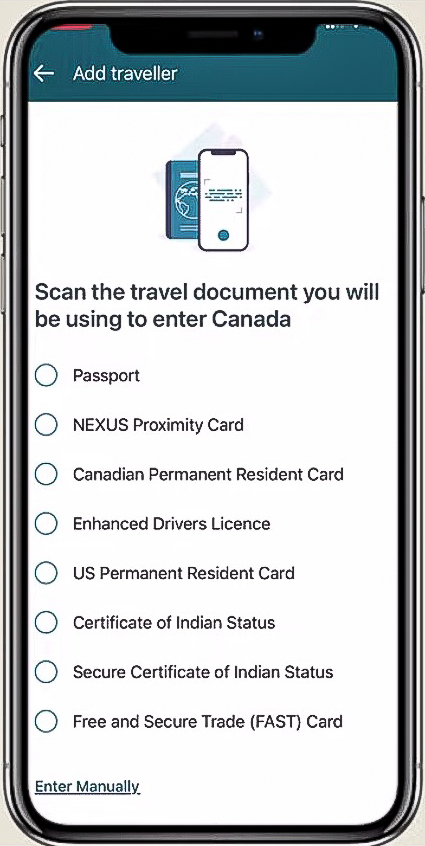
You’ll be asked to upload travel documents. First a valid passport. Next a photo of your COVID vaccination card containing the brand of vaccine received, as well as date and country of vaccination. You’ll also need to answer three vaccination questions.
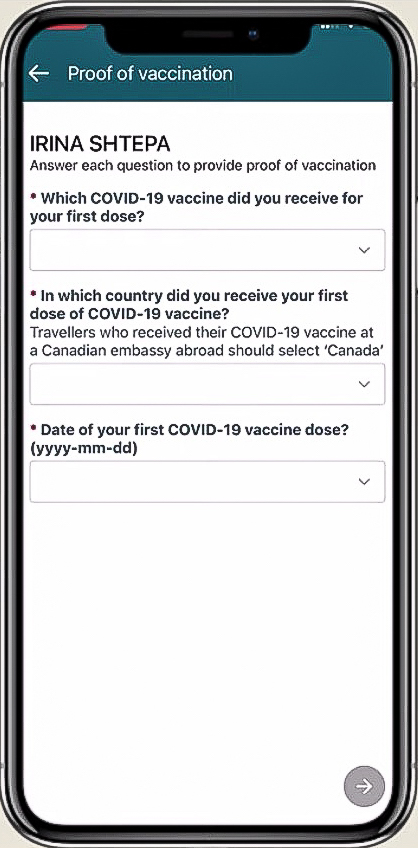
Upon completion of the upload, you’ll be asked “did you or anyone traveling with you visit any other countries besides Mexico?” Answer yes or no.

The last part of the ArriveCAN app is COVID self assessment. It asks if you are experiencing a fever, cough or difficulty breathing.
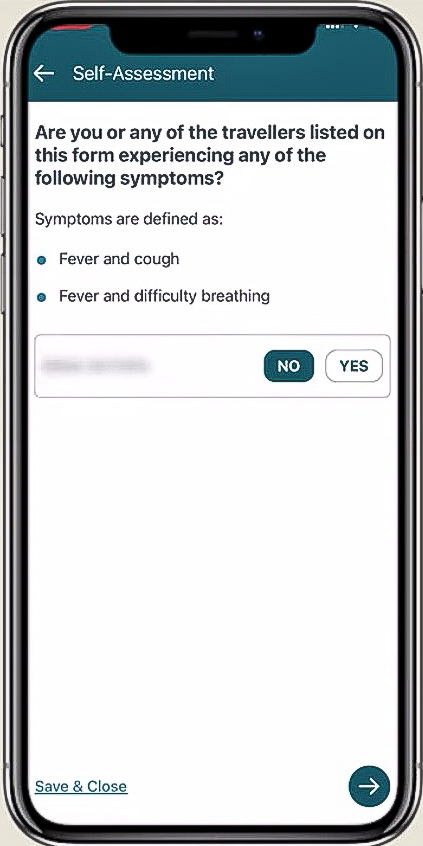
That’s it! The application is finished. The end screen will show the ArriveCAN receipt with your airport and arrival time, nationality of traveler, and most importantly the ArriveCAN ticket number and QR code. Keep this handy.
Hot tip: take a screen shot of the ArriveCAN QR code so you have the information readily available.

Along with your ArriveCAN receipt, it’s always smart to bring your COVID vaccination card, or a copy, when you travel.
Arriving at the Canadian Borders
Protocol varies depending on which form of entry you choose.
Air: You may be asked to show your ArriveCAN receipt prior to boarding the flight. After landing at one of Canada’s four international airports, you will go through customs and fill out a customs declaration. The form has been automated, letting travelers complete the information on a computer screen in a small booth and print the declaration.
Proceed to the immigration officers’ counter, show your form, passport and ArriveCAN receipt. It is here where you may be selected for a random COVID test. The agent will place either a green or pink round sticker on your passport. Exit customs. At the second exit point another agent will ask to see your passport. A green sticker indicates no need for a COVID test. Pink requires a COVID test.
Should a traveler need to get tested, the process is fast and efficient. A makeshift testing area is nearby. The person administrating the test is dressed in full PPE. They will confirm your identity, then swab the inside of your mouth and nose. Results will be emailed within 24 hours.
Car/Bus: When arriving at the USA/Canada border follow the signs to the first checkpoint — Primary Inspection. Here a border agent will examine your identification, travel documents, ArriveCAN receipt and take your verbal declaration. You may or may not be required to fill out a form.
Sea: To embark on a cruise ship that will start, dock, or end in Canada, travelers must be fully vaccinated. There is no arrival testing for passengers entering Canada for shore excursions.
Keep in mind, the rules are fluid, so check the https://travel.gc.ca/websites for updates prior to traveling to Canada.
Enjoy your trip, eh!
Related Posts:
Beginner Tips for a Montreal Vacation
Feature and airport photos courtesy of Pexels – Alesia Kozik and Dennis Roubos.

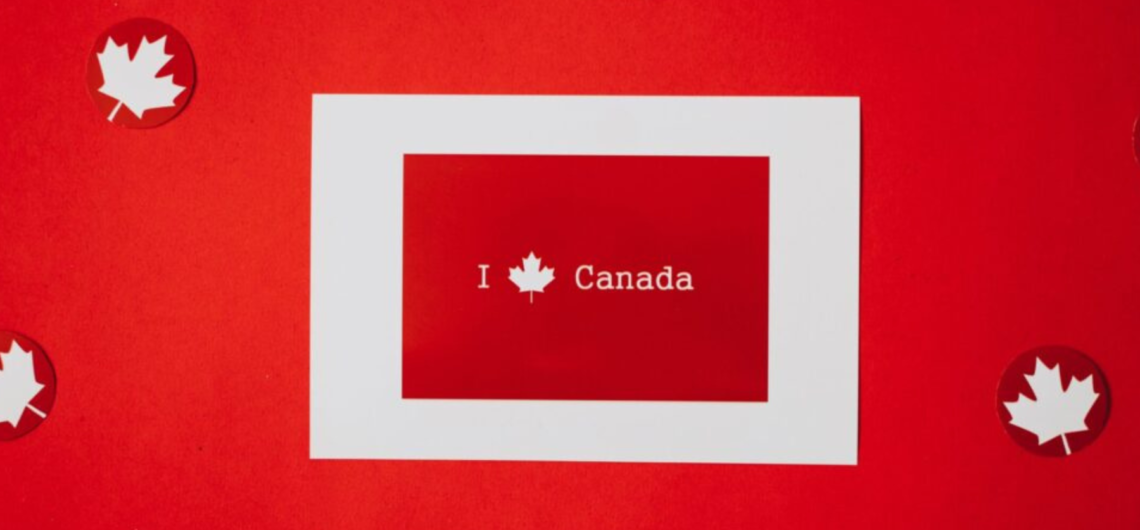
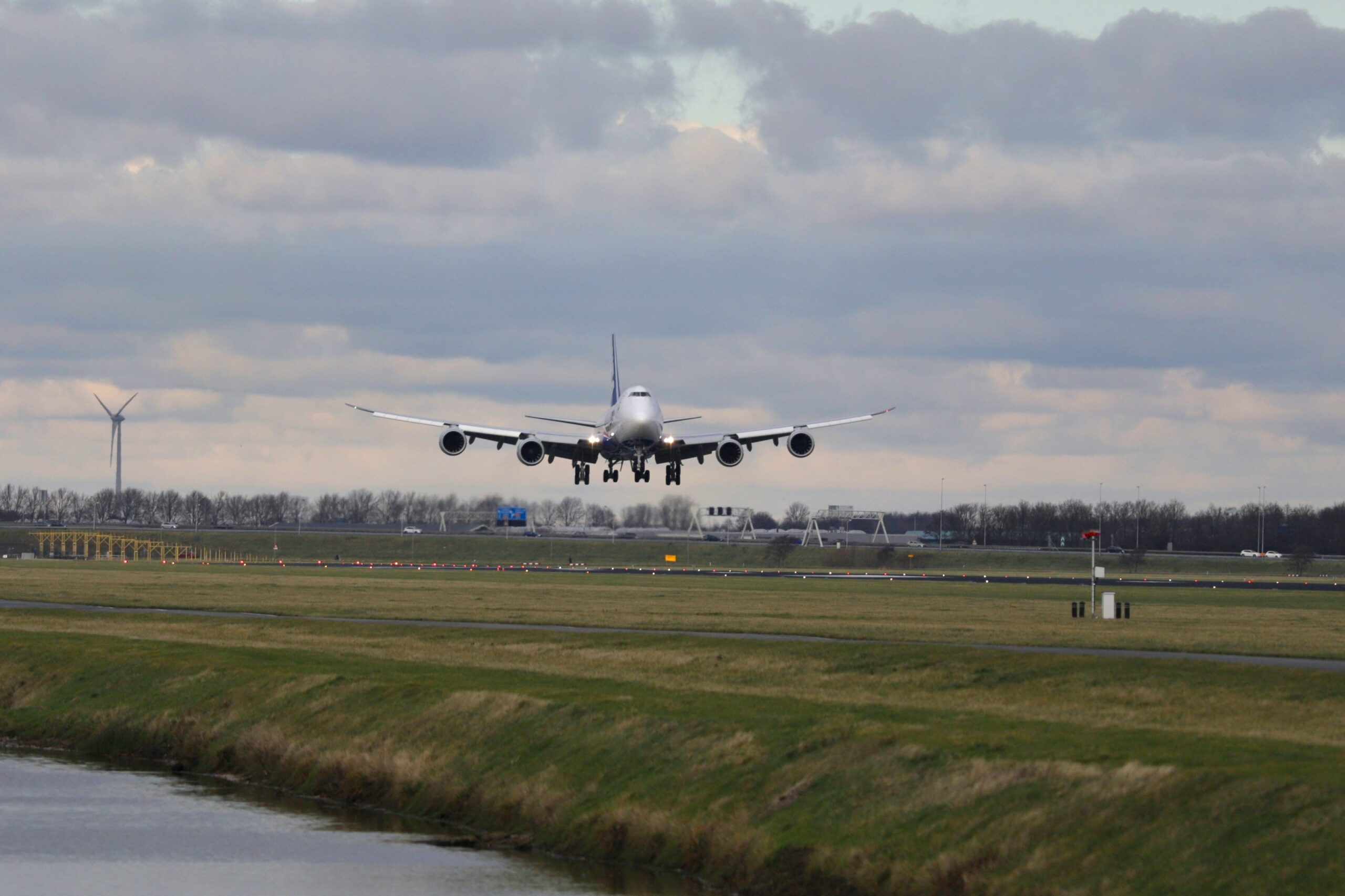
Comments